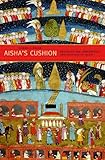Aisha's cushion : religious art, perception, and practice in Islam / Jamal J. Elias.
Material type: TextPublisher: Cambridge, Mass. : Harvard University Press, 2012Copyright date: ©2012Description: 1 online resource (x, 404 pages) : illustrationsContent type:
TextPublisher: Cambridge, Mass. : Harvard University Press, 2012Copyright date: ©2012Description: 1 online resource (x, 404 pages) : illustrationsContent type: - 0674067398
- 9780674067394
- 297.2/67 23
- BP190.5.A7 E45 2012eb
- online - EBSCO
| Item type | Current library | Call number | URL | Status | Notes | Barcode | |
|---|---|---|---|---|---|---|---|
 eBook
eBook
|
Biblioteca "Angelicum" Pont. Univ. S.Tommaso d'Aquino Nuvola online | online - EBSCO (Browse shelf(Opens below)) | Online access | Not for loan (Accesso limitato) | Accesso per gli utenti autorizzati / Access for authorized users | (ebsco)502787 |
Browsing Biblioteca "Angelicum" Pont. Univ. S.Tommaso d'Aquino shelves, Shelving location: Nuvola online Close shelf browser (Hides shelf browser)

|

|

|

|

|

|

|
||
| online - EBSCO Agents of uncertainty : Mysticism, scepticism, Buddhism, art and poetry. | online - EBSCO Aging in the church : how social relationships affect health / | online - EBSCO Aḥmad al-Ghazali, remembrance, and the metaphysics of love / | online - EBSCO Aisha's cushion : religious art, perception, and practice in Islam / | online - EBSCO Akiva : life, legend, legacy / | online - EBSCO Al-Kashshaf : Al-Zamakhshari's Mu'tazilite exegesis of the Qur'an / | online - EBSCO Alain Badiou : Between Theology and Anti-Theology. |
Includes bibliographical references and index.
Prologue: the promise of a meaningful image -- Representation, resemblance and religion -- The icon and the idol -- Iconoclasm, iconophobia and Islam -- Idols, icons and images in Islam -- Beauty, goodness, and wonder -- Alchemy, appearance and essence -- Dreams, visions and the imagination -- Sufism and the metaphysics of resemblance -- Words, pictures and signs -- Legibility, iconicity and monumental writing.
"Media coverage of the Danish cartoon crisis and the destruction of the Buddhas of Bamiyan left Westerners with a strong impression that Islam does not countenance depiction of religious imagery. Jamal J. Elias corrects this view by revealing the complexity of Islamic attitudes toward representational religious art. Aisha's Cushion emphasizes Islam's perceptual and intellectual modes and in so doing offers the reader both insight into Islamic visual culture and a unique way of seeing the world. Aisha's Cushion evaluates the controversies surrounding blasphemy and iconoclasm by exploring Islamic societies at the time of Muhammad and the birth of Islam; during early contact between Arab Muslims and Byzantine Christians; in medieval Anatolia and India; and in modern times. Elias's inquiry then goes further, to situate Islamic religious art in a global context. His comparisons with Christian, Jewish, Buddhist, and Hindu attitudes toward religious art show them to be as contradictory as those of Islam. Contemporary theories about art's place in society inform Elias's investigation of how religious objects have been understood across time and in different cultures. Elias contends that Islamic perspectives on representation and perception should be sought not only in theological writings or aesthetic treatises but in a range of Islamic works in areas as diverse as optics, alchemy, dreaming, calligraphy, literature, vehicle and home decoration, and Sufi metaphysics. Unearthing shades of meaning in Islamic thought throughout history, Elias offers fresh insight into the relations among religion, art, and perception across a broad range of cultures."-- Provided by publisher.
Print version record.
In English.


